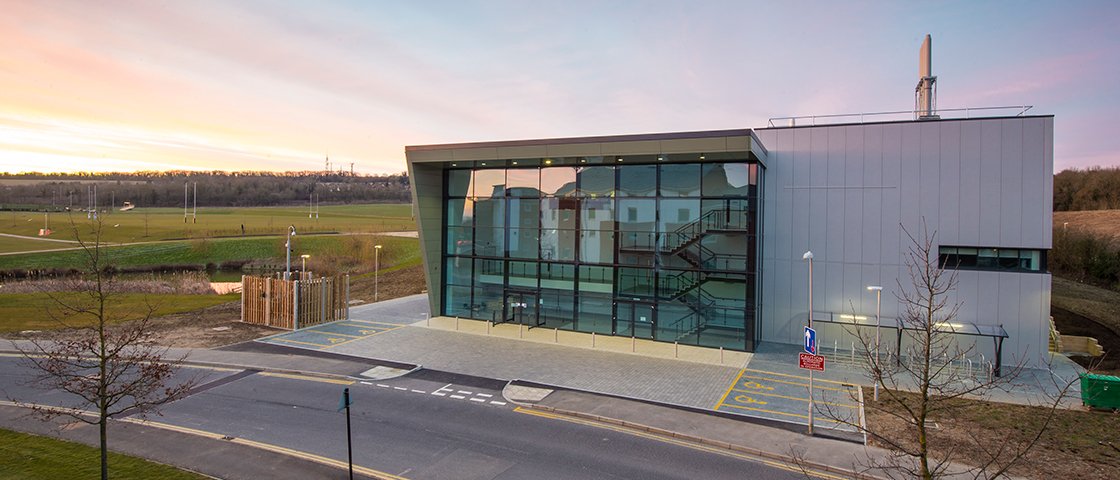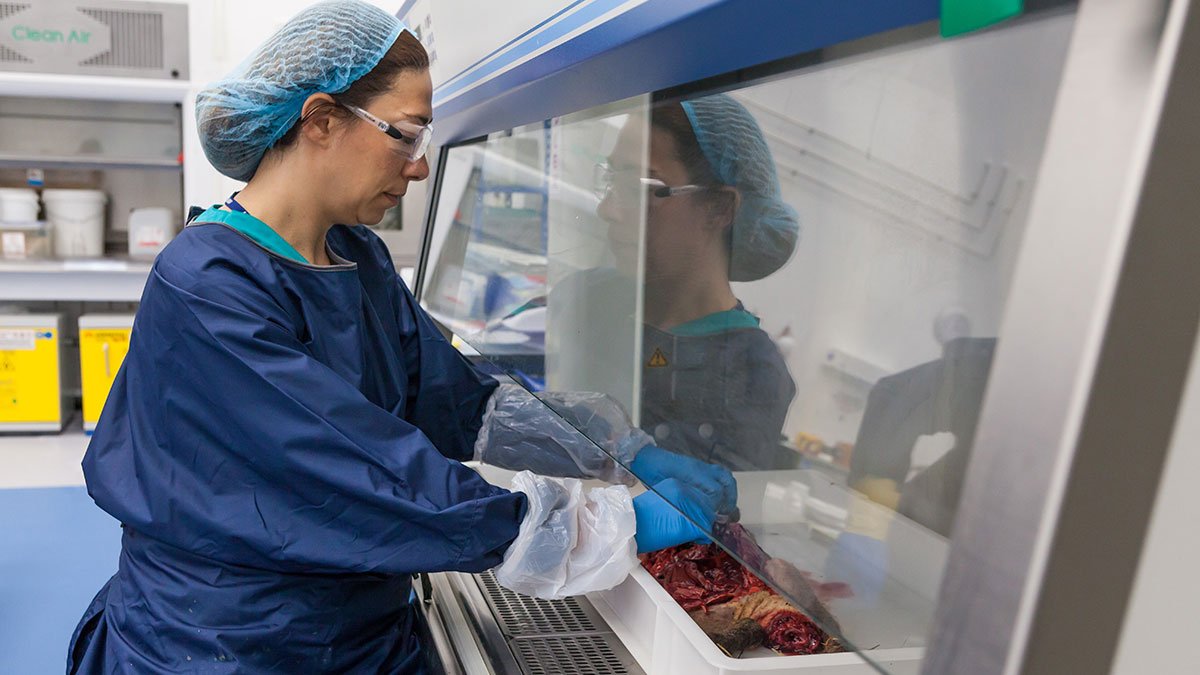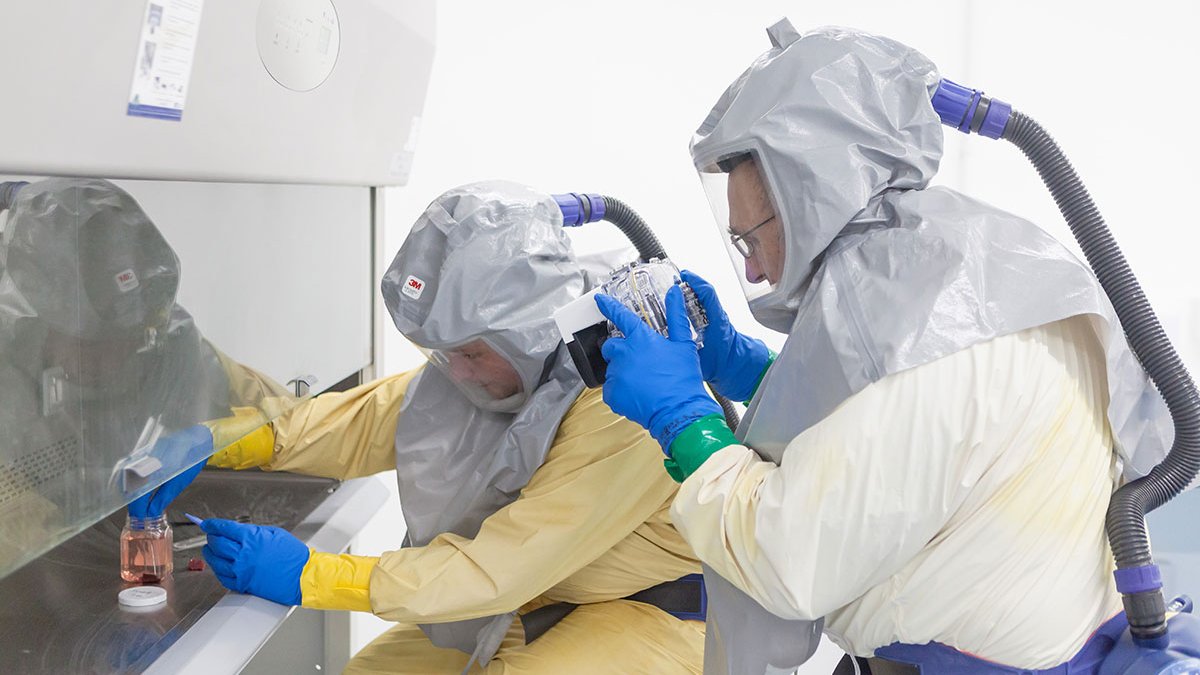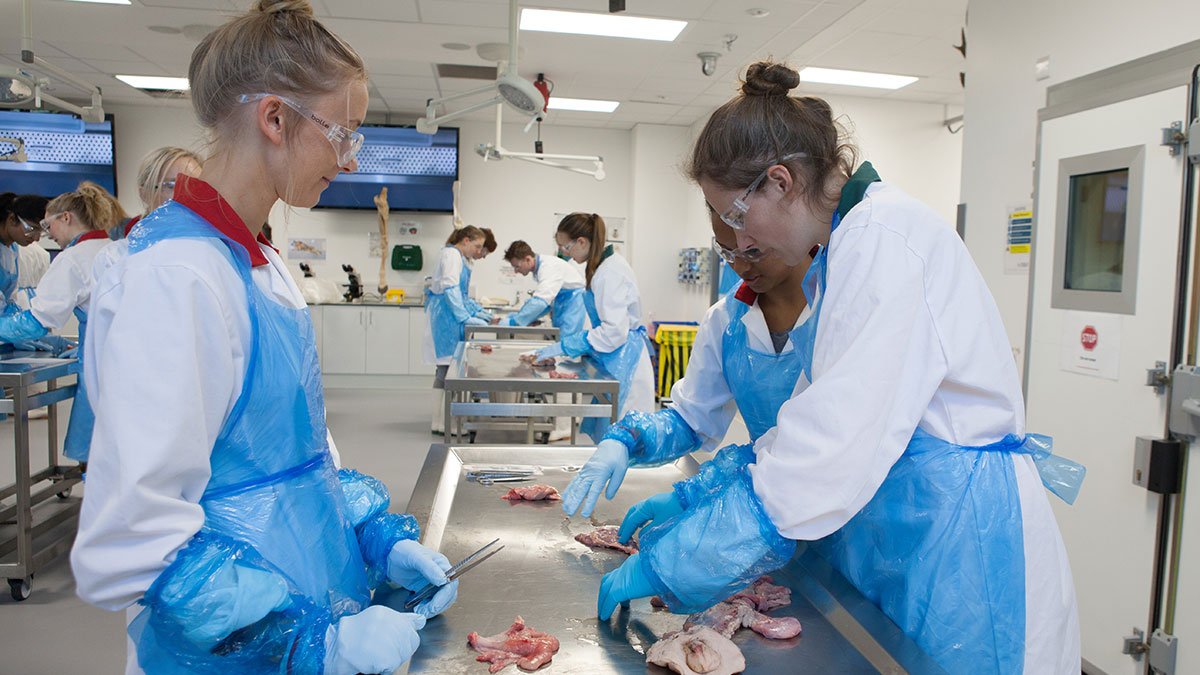
Facilities
Our facilities include the very latest high-containment post-mortem examination facilities, as well as histology and clinical pathology laboratories and a microscopy suite with multi-headed microscope, digital microscopy and X-ray facilities.
Overview
Our building centres on a large Containment level 2 (CL2) post-mortem examination room with high ceilings, natural lighting, post-mortem examination tables, biological safety cabinets, and integrated cold rooms. Such sophisticated facilities, together with a powerful hoist system, means that post-mortem examinations can be carried out on a wide range of species.
A large viewing gallery overlooks the suite and, where appropriate, the latest digital technology can be used to record and stream post-mortem examinations for training purposes.
Post-mortem examination room (CL2)
The Containment Level 2 (CL2) post-mortem examination room deals with carcases that are potentially infected with ACDP Hazard Group (HG) 2 biological agents.
The work in this area of the Centre is predominantly diagnostic post-mortem examination activities, where the cause of death is unknown or requires further investigation.
Our facility is also used for teaching veterinary students in post-mortem examination techniques
Post-mortem examinations
For further information about the services we offer, see our post-mortem examinations page.
Histopathology laboratory
Our Histopathology Laboratory offers histological processing and interpretation for diagnostic and research purposes from internal and external sources.
Services include:
- Diagnostic histopathology (biopsies and post-mortem samples)
- Special stains
- Immunohistochemistry.
Histopathology Services
For further information about the services we offer, see our histopathology services page.
Teaching facilities
We offer exemplary teaching facilities for veterinary students and vets-in-practice, through post-mortem examination of companion, exotic, equine, livestock, wildlife and zoo animals.
Our purpose-built School of Veterinary Medicine includes dedicated teaching spaces, breakout rooms, research and teaching laboratories and a large veterinary Clinical Skills Centre. Located on our Manor Park campus, our Veterinary Pathology Centre offers state-of-the-art pathology teaching, research and diagnostic facilities.
Vets in training
At the University of Surrey, we pride ourselves on our innovative approach to veterinary education and training. Our veterinary students are exposed to a large and varied caseload, thanks to the University's strong connections with established clinical partners and the wider veterinary profession.
A distributed model of teaching means that students are out in the field from day one of their education and training and are exposed to the wide range of career opportunities open to veterinary graduates, through regular contact with clinicians, research institutes and government agencies.
Find out more about the School of Veterinary Medicine.

Facilities Team

Tom Hussey
Pathology and Building Facilities Manager






